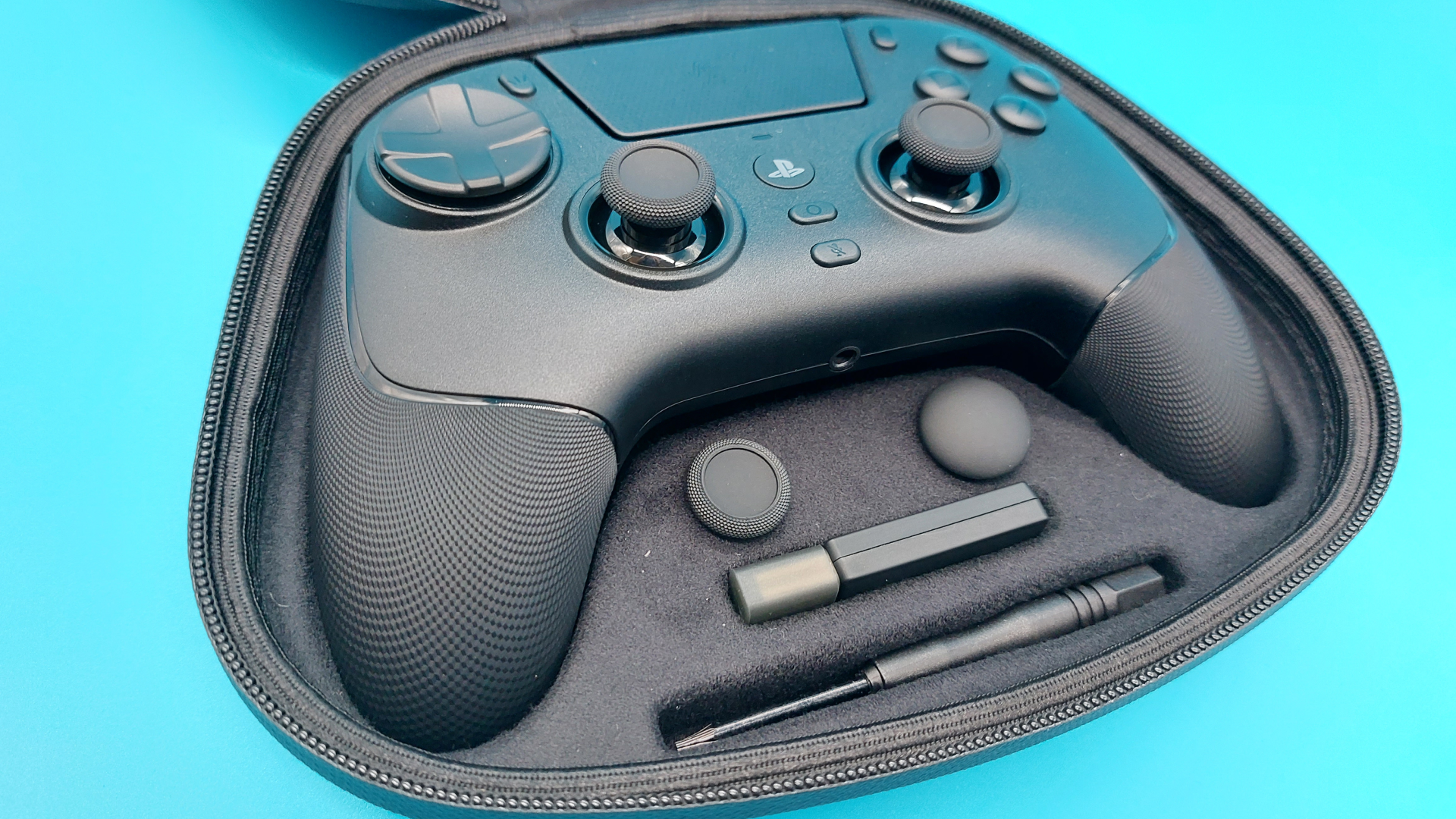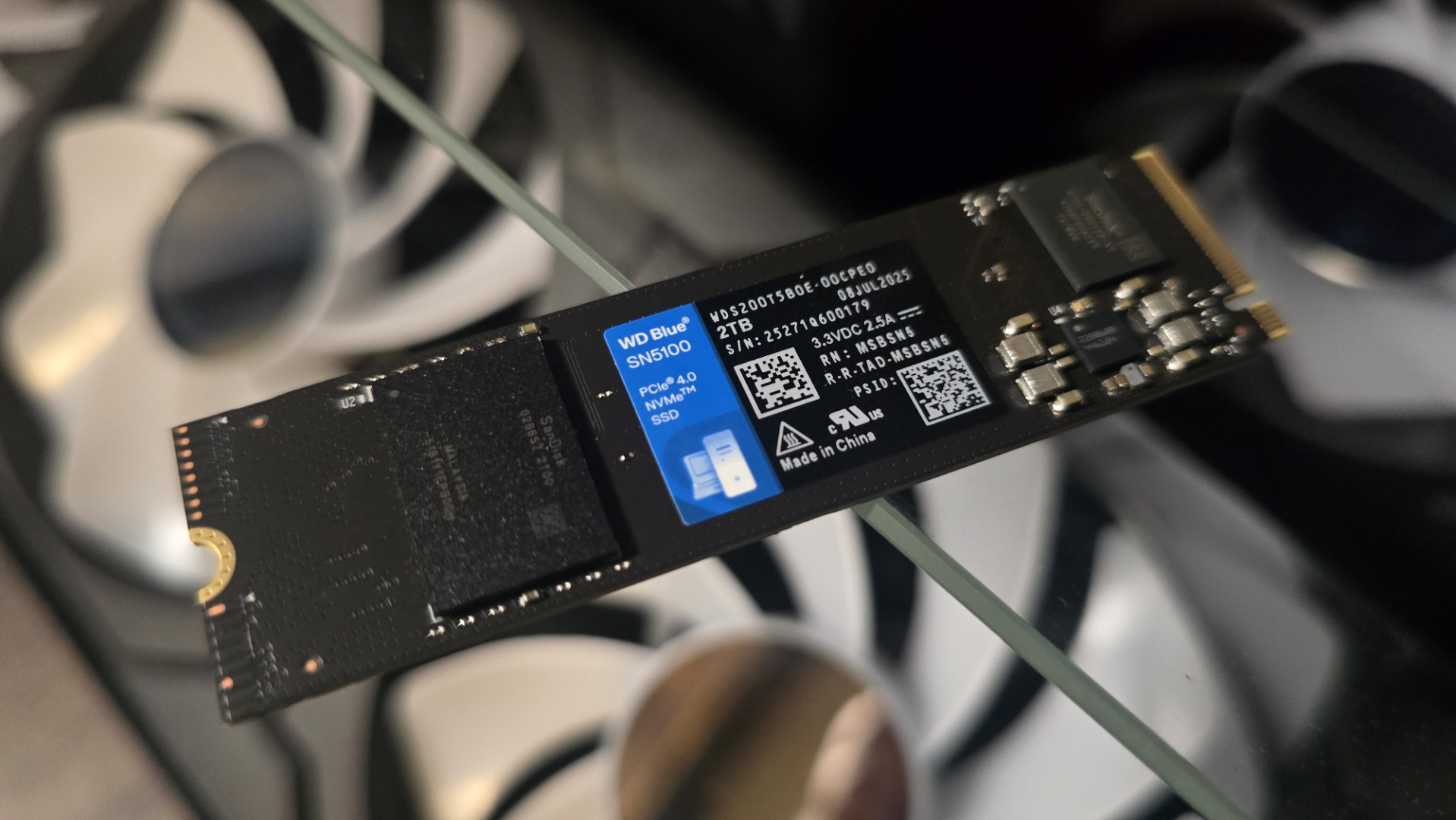Our Verdict
The Razer Raiju V3 Pro is a lightweight, richly customisable controller geared towards demanding play. However, its PlayStation-stylings come at a difficult-to-justify premium.
For
- Richly customisable
- Lightweight but robust
- Removable back buttons
- TMR thumbsticks
Against
- How much?
- No Bluetooth mode
- Face buttons are clicky, not thocky
PC Gamer's got your back
Razer has been on a tear. Not satisfied with being our top pick for the best high-end controller once, they've only gone and done it again with the Razer Wolverine V3 Pro 8K. But if you're not a fan of this pad's Xbox-style asymmetric sticks and button glyphs, Razer has another 'don't worry, I've got you' offering.
Enter the Raiju V3 Pro, another wireless controller pitched towards the Esports scene but instead featuring symmetrical TMR sticks and PlayStation stylings. All for $220, which is $20 more than the latest iteration of the Wolverine. Sorry, what?
The TMR sticks contribute in part to that steep premium. For those unaware, the Hall effect is one magnetic tech that effectively banishes stick drift, and TMR (or tunnelling magnetoresistance) is another.
The difference is that the way TMR leverages its electromagnetic sensors allows the controller's sticks to pick up really minute movements, making for a level of precision above even what the Hall effect can offer. Oh, and on the Raiju V3 Pro, you can swap in a long, long thumbstick topper for even more precise movement if that's your jam (though I'm not sure it's mine).
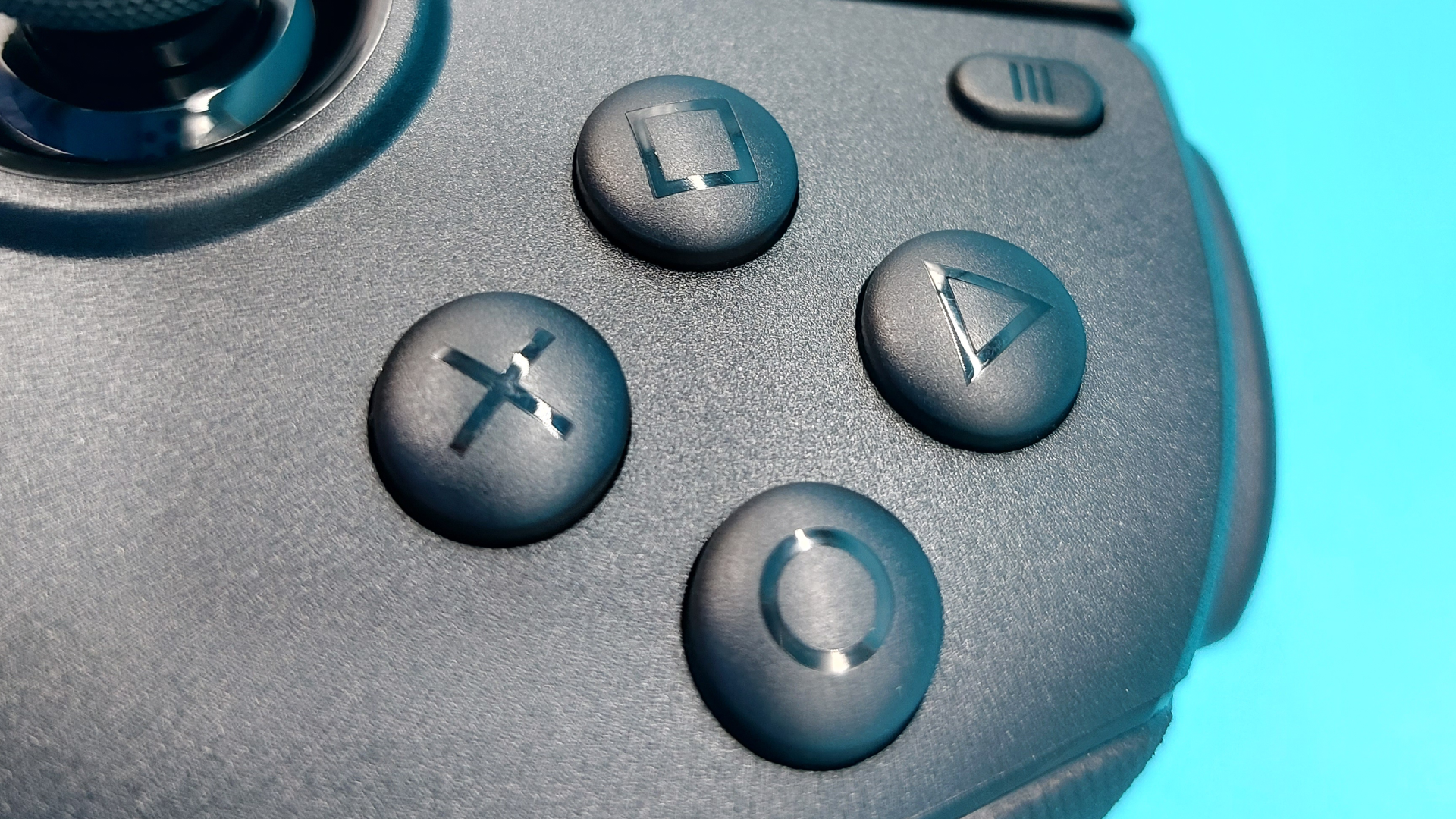
Compatibility: Windows, PS5
Connectivity: USB-C, 2.4 GHz
Ports: USB-C, 3.5 mm audio jack
Thumbsticks: TMR
Thumbstick layout: Symmetrical (PlayStation-style)
Polling rate: Up to 2,000 Hz (PC), 250 Hz (PS5)
Weight: 260 g
Price: $220/£200
The pad's triggers and bumpers are also tuned in the name of Pro-level precision. The shoulder bumpers already serve mouse-click quickness, but the triggers can be toggled between a similarly responsive clicky mode or a more typical, fuller range of movement via corresponding flicky switches on the gamepad's underside. On top of that, you can dive into Razer's Synapse software and fine-tune the triggers' actuation point to suit you.
Alongside the typical PlayStation R1/L1 shoulder buttons and R2/L2 triggers, you also get the bonus M1/M2 clickers a little further in. These are the most pronounced of the Raiju V3 Pro's six remappable buttons.
As my first exposure to remappable back buttons was the DualSense Edge, I couldn't help but wrinkle my nose at the raised paddle shape of M buttons 3 through to 6 on first brush; on the Edge, I'm always misclicking the floating back paddles, and the alternate back button toppers that jut out even more aren't really much better in my uncoordinated grip.
Keep up to date with the most important stories and the best deals, as picked by the PC Gamer team.
However, the angle of the Raiju V3 Pro's buttons and their placement make way more sense for my grabby little hands. The shape of the M3 to M6 buttons reminds me a bit of helicopter seeds, flicking up at the outer edge end to better cradle your fingertips. It's possible to register a click at the inner part of these remappable buttons, but it's far more comfortable to click at the more raised end.
It's a small bit of smart design that felt like it genuinely reduced the number of times I misclicked one of the back buttons. Still, when clumsiness does inevitably get the better of me, it's good to know I can also disable the Raiju V3 Pro's back buttons not just via the Synapse software but also on a hardware level, too.
Yes, it's finally time to talk about what that itty bitty bespoke screwdriver in the box is all about. As a hardware writer, I already have more tiny tools than I know what to do with, but at least here you can slot Razer's screwdriver into a designated cubby within the included carry case. As to why you might want to take this tiny tool on the road with you, let me explain.
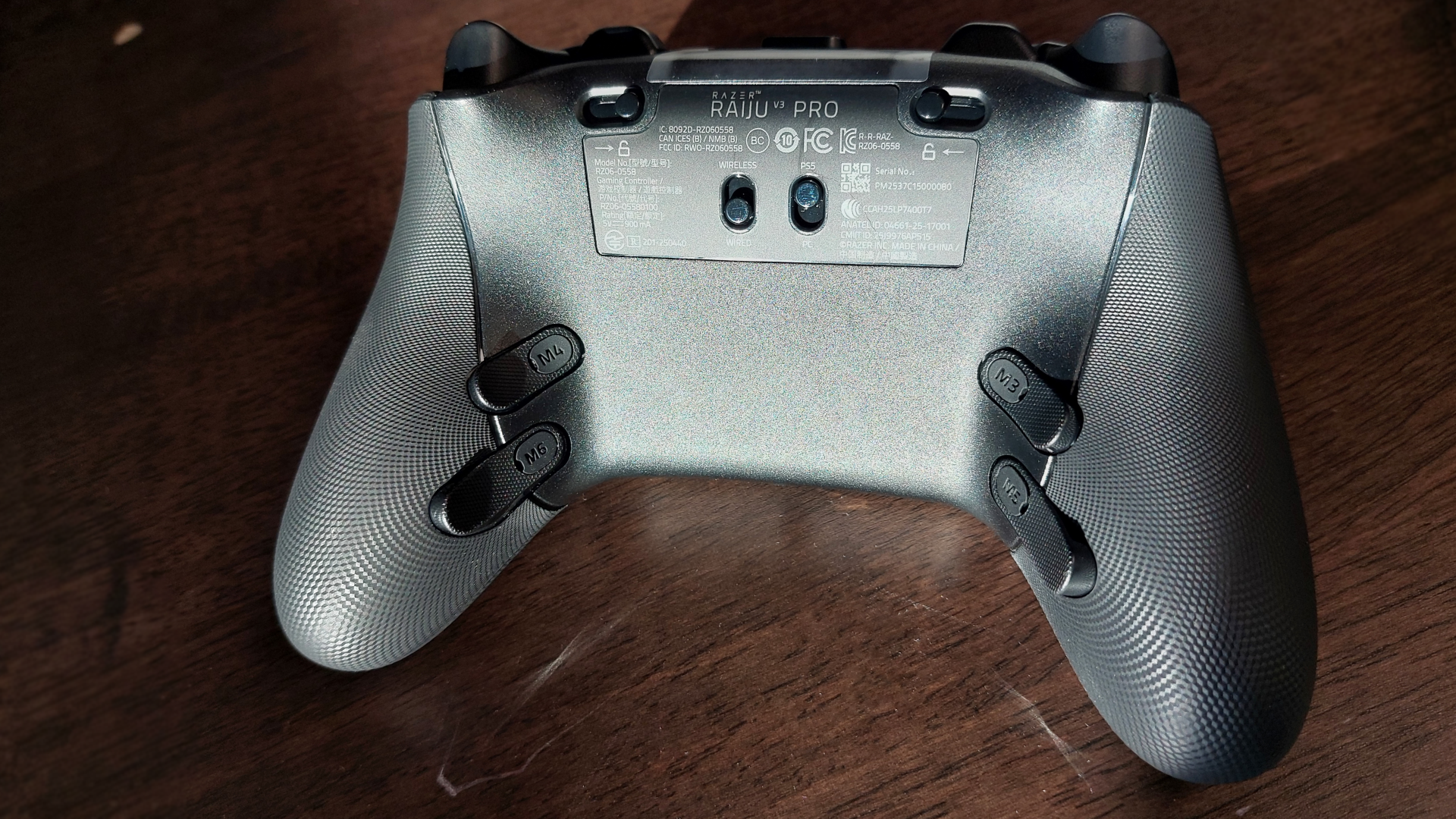
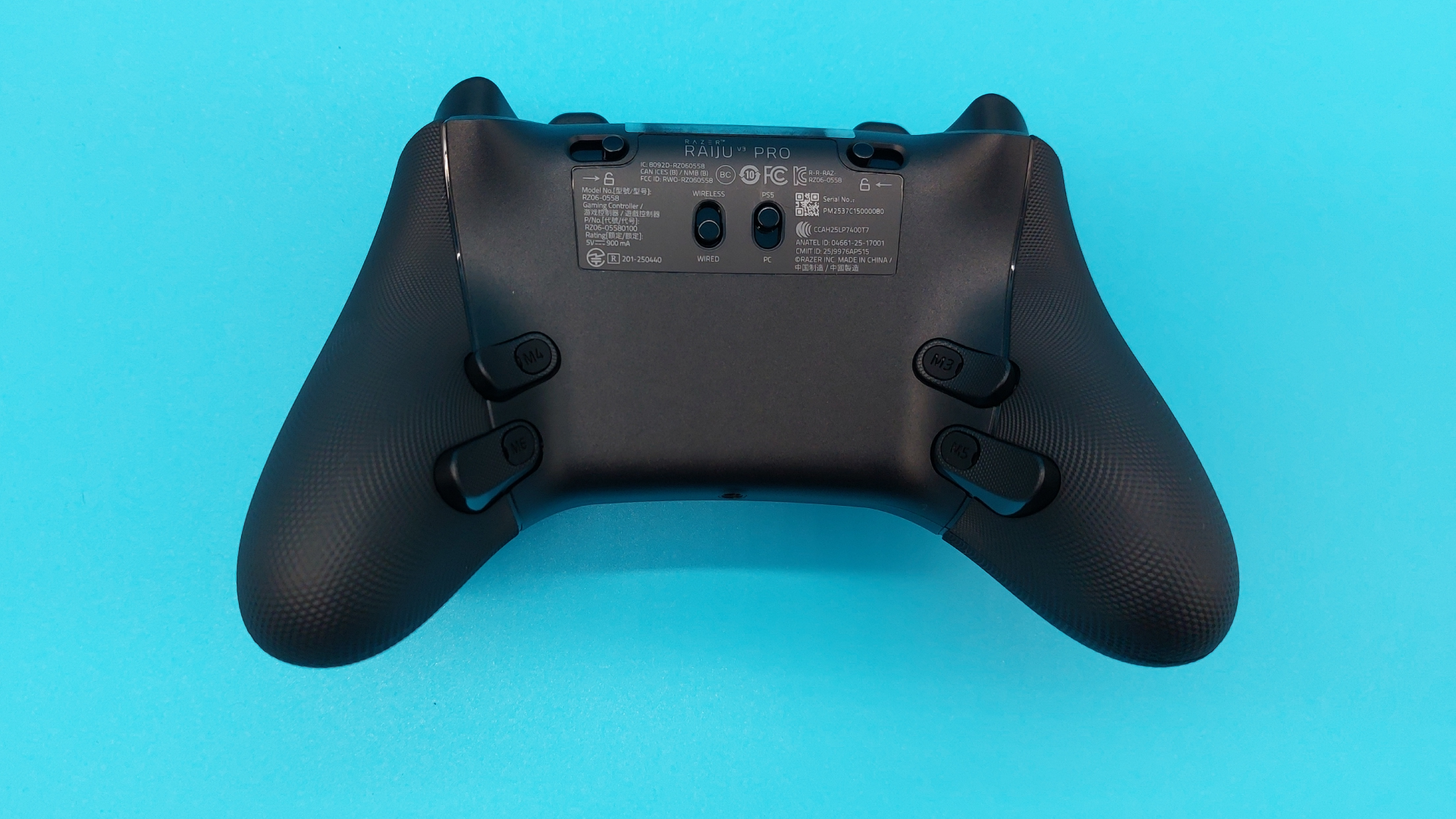
On top of the M3, M4, M5 and M6 back buttons is a wee silicone shield. Pry this up (which is easier said than done with short nails), and a teeny tiny screw will be exposed. Unscrew this with the included screwdriver, and you can replace the raised back buttons with one of the included 'blanking slates' to smooth out the underside of your controller, should you so wish. If you'd rather not remove the back buttons, you can alternatively just press 'disable' in the Synapse software—troublesome misclicks begone!
As you might expect, there's actually a lot more besides the back buttons you can noodle with in Synapse. Let's talk about the TMR thumbsticks again: via Synapse, you can really finely tune your sticks' dead zones, as well as toggle on a setting that prevents doubling up on dead zones introduced at a software level in-game.
You can also toggle a setting that either keeps your directional movements pronounced or smoothes them out. Last but certainly not least, you can also set up a DPI-reducing sensitivity clutch for more precise aiming, say, down the sights of a sniper rifle. All of this can then be calibrated across four different on-board profiles.
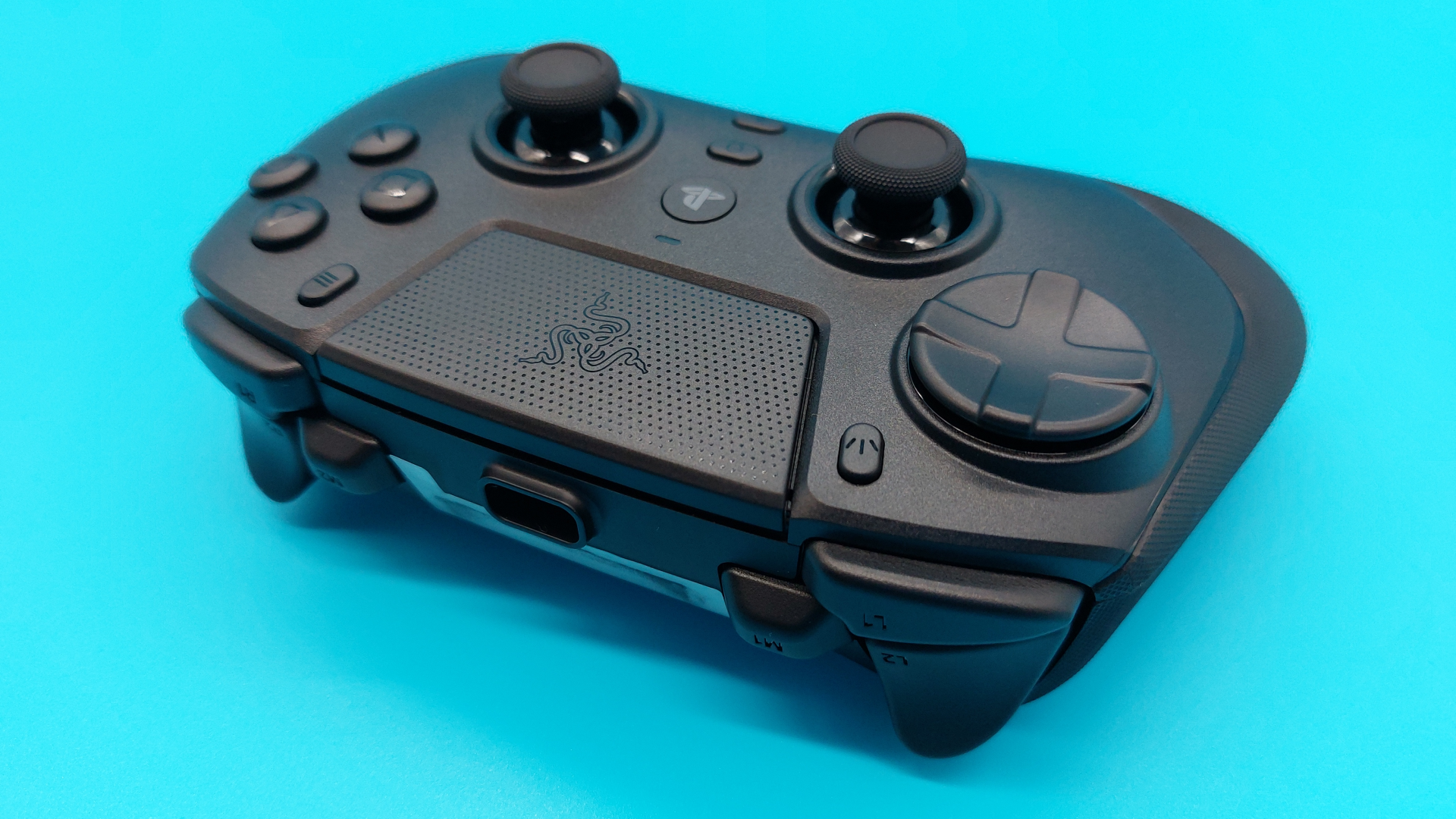
Make no mistake, the Razer Raiju V3 Pro is an impressively customisable controller. But I'm still fairly certain that even with this snazzy bit of kit in hand, any opposing Azucena player in Tekken 8 is still going to kick my arse.
My own skill issues aside, it's worth also mentioning that the Raiju V3 Pro offers an up to 2,000 Hz polling rate (which is only available on PC because the PS5's standard polling rate caps out at 250 Hz). I say 'up to' because, yes, you can fiddle with this in Synapse too; under 'wired polling rate,' you can choose between 250 Hz, 500 Hz, 1,000 Hz, and 2,000 Hz options.
Now, lest owners of the Razer Deathadder V3 Hyperspeed mouse with its 8,000 Hz polling rate think they'd be getting shortchanged by this controller, let me be clear: an 8,000 Hz polling rate is frankly ridiculous—and I say this as someone who uses the Razer Deathadder V3 Hyperspeed every day.
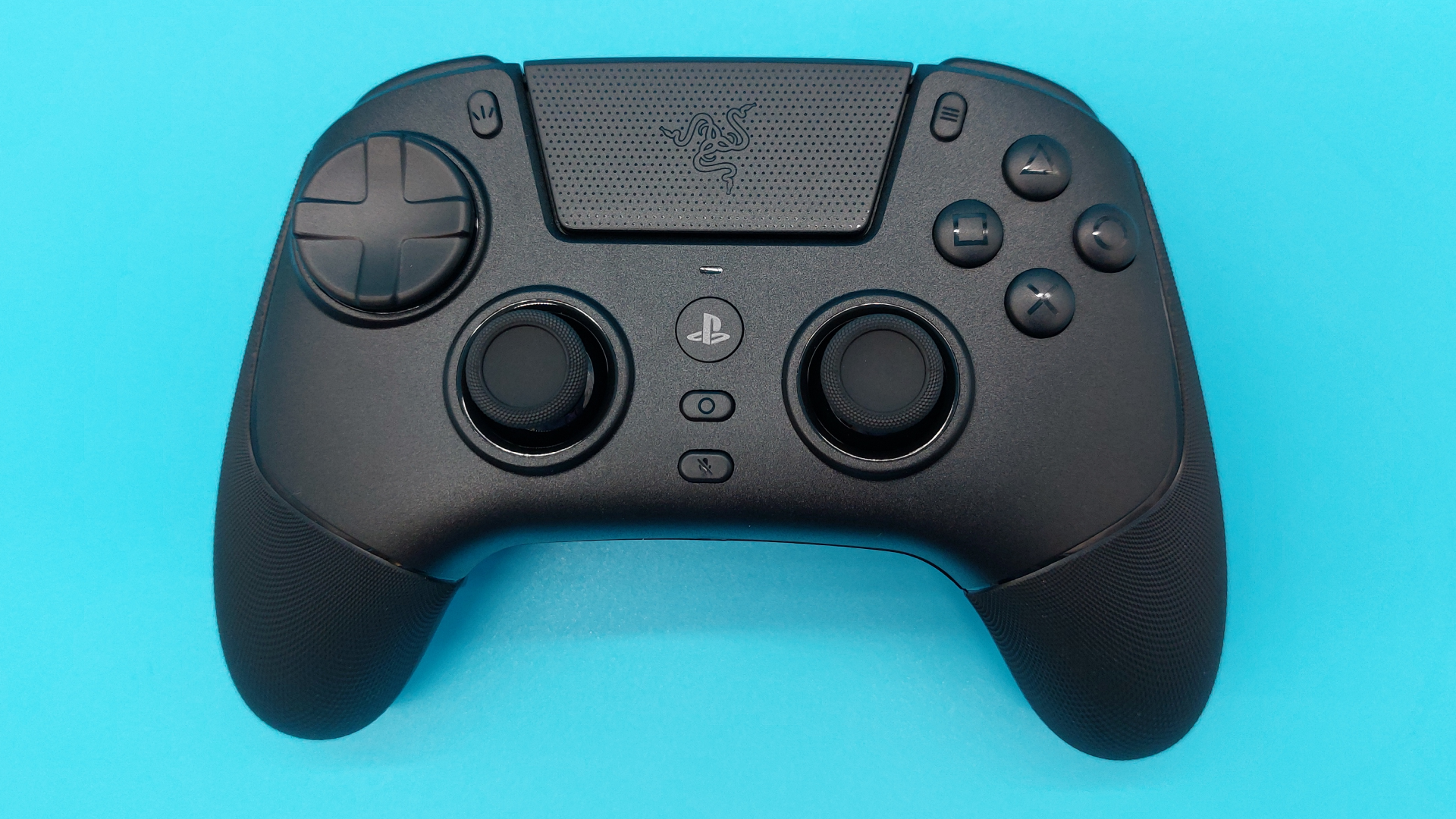
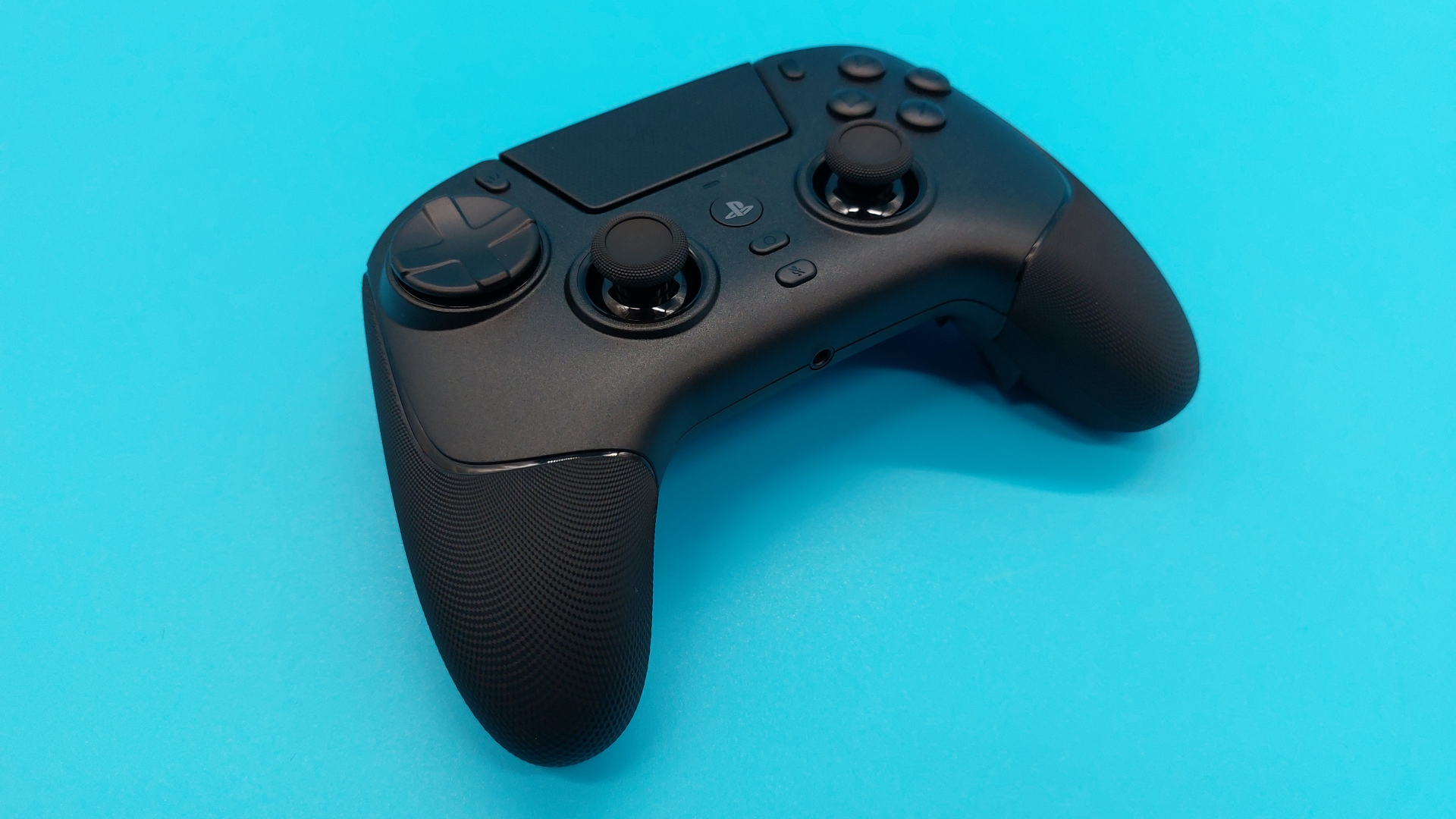
A 2,000 Hz polling rate on a controller, combined with everything else you can minutely customise in the name of precision on the Raiju V3 Pro, is more than enough. Those playing at a competitive level are unlikely to find a 2,000 Hz polling rate wanting, and those who just want to, say, mash devils in Raidou Remastered: The Mystery of the Soulless Army, will be similarly satisfied.
But enough about what you can fiddle with—let's unplug this bad boy and actually talk about how it feels in the hands. Just for a start, I definitely like this more than the similarly priced DualSense Edge—though that's arguably a low bar to clear
The Razer Raiju V3 Pro is a surprisingly lightweight bit of kit, while also offering fairly robust build quality. I appreciate the included carry case, but I'm also not fretting that this controller will get chewed up in a bag without it.
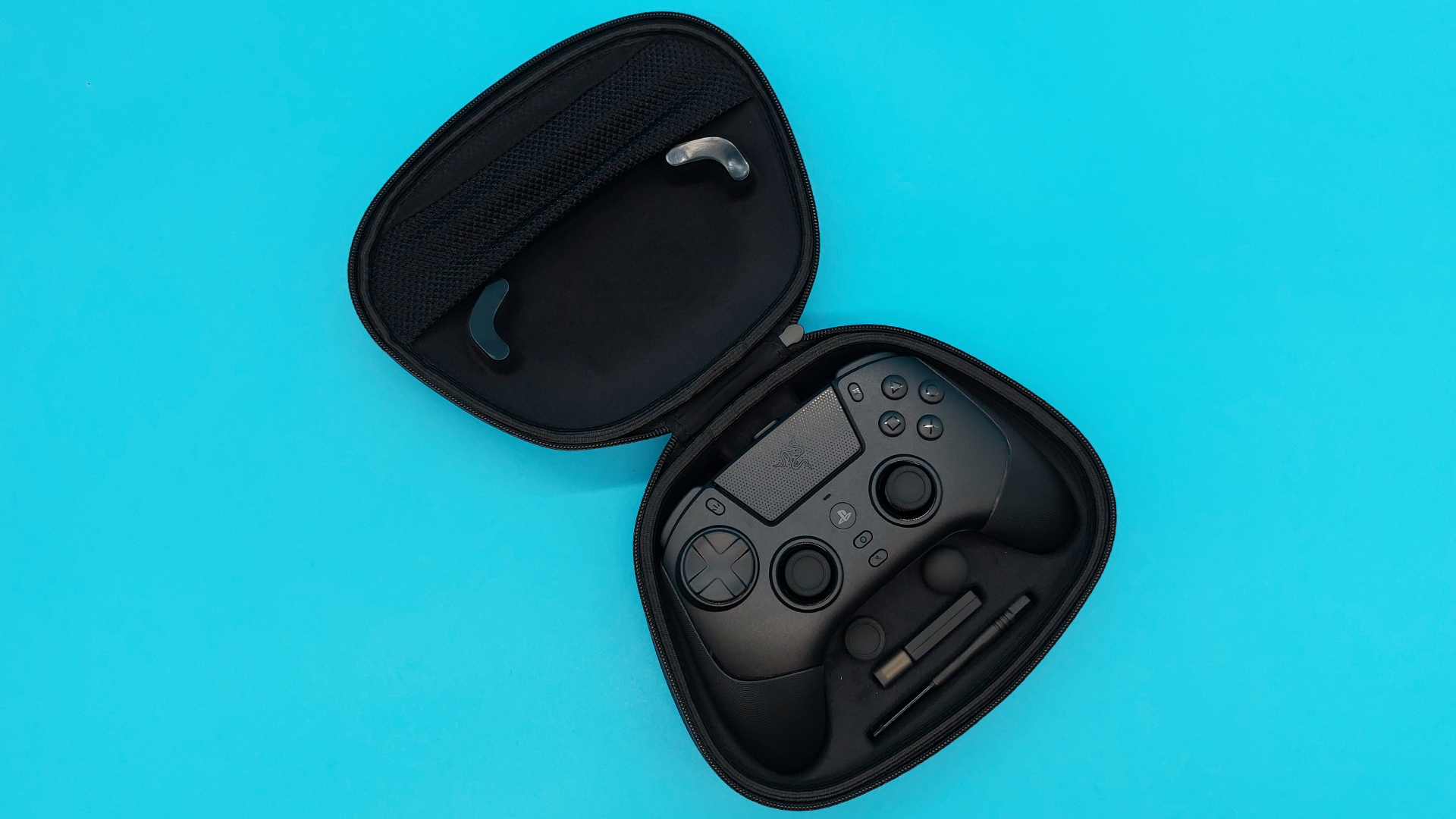
I also appreciate the symmetrical TMR sticks and the PlayStation button glyphs. The floating D-Pad and face buttons are fairly clicky on the Raiju V3 Pro, though there's some tactile resistance to each of my button presses I'm not really loving. As with the shoulder bumpers and M buttons, it's more of a mouse click.
That's great for demanding play that requires lightning-fast reactions, but I don't think it's really my cup of tea. After all, I'm not lining up play of the game headshots on the regular, I'm just over here trying to fill out my devil chart in Raidou Remastered.
Personally, I prefer how the face buttons feel on the similarly priced wireless version of the Scuf Valor Pro and even the far, far cheaper GameSir Nova Lite. What can I say? I just like my face buttons to offer a little more THOK. Sure, there's no accounting for taste, but if you're also not a fan of mouse-style clicks on a controller, then the Raiju V3 Pro may not be for you.
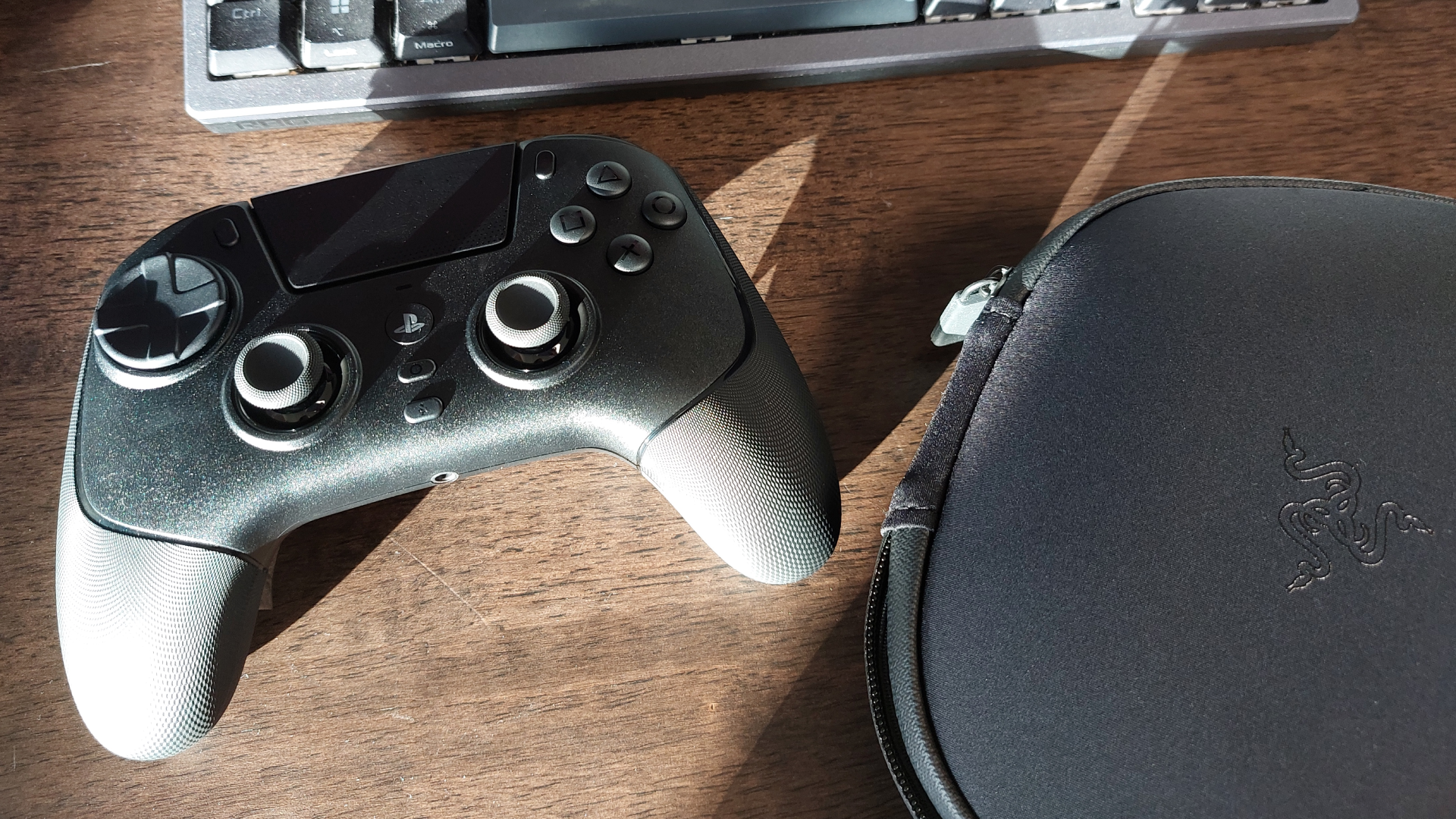
On the subject of controller comparisons, the Valor Pro is a heavier bit of kit than the Razer Raiju V3 Pro, but I prefer the heftier, more ergonomic handles on the Scuf. Both controllers feature textured non-slip grips too, but in two different flavours: If you're after a subtle, totally unobtrusive texture under your palms and forefingers, the Raiju V3 Pro has got you covered; If you like a rugged, almost tractor tyre track vibe mostly localised to your palms, then you'll love the Valor Pro.
✅ You want a deeply customisable pro controller: Though this works great out of the box, there are lots of settings to noodle with in the Razer Synapse software. You can also entirely remove four of the six remappable back buttons—neat!
✅ You want a pro controller you can use on both your PC plus your PS5: The Razer Raiju V3 Pro can be used on either your rig or Sony console—just don't forget to flick the switch on the controller's underside before you connect.
❌ You have a strict budget: Even our favourite high-end controller, the Razer Wolverine V3 Pro 8K PC, is cheaper than this.
Scuf's Pro controller also comes with removable back buttons and blanking slates too, though the process of removing them requires more scrabbling around with just your nails—unfortunately, there's no bespoke screwdriver to be found there. Otherwise, the wireless Scuf Pro Valor is another sturdy controller pitched towards competitive play for $30 less than the Razer Raiju V3 Pro. Scuf also offers interchangeable faceplates and more colourways besides just black and white.
Mind you, if you're already in the market for a pricey pro controller and you're not fussed about the Raiju's specifically PlayStation layout, there's always the previously mentioned Razer Wolverine V3 Pro 8K PC. Featuring Xbox-style asymmetric sticks and face button glyphs, you're also getting a ridiculous 8,000Hz polling rate—but for $20 less than the Raiju V3 Pro.
As a filthy console convert myself, I do think it's a bit of a shame that a pro controller with PlayStation-stylings doesn't feature in our best PC controller guide—but the Razer Raiju V3 Pro isn't going to change that. I just keep coming back to that $220 price tag. As nice as it is that I can use this controller on both my PC and my PS5, most of my Steam games default to Xbox-style button glyphs within the UI.
Again, this probably speaks more to my far-from-toned muscle memory, but this disconnect between what I'm seeing in-game and what's on my controller adds more of a delay to punishing my opponents than I'd like. Alas, trounced by an Azucena player again.
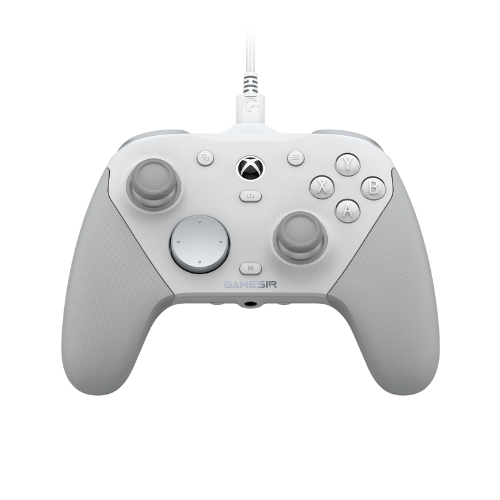
1. Best overall:
GameSir G7 Pro
2. Best budget:
GameSir Nova Lite
3. Best high end:
Razer Wolverine V3 Pro 8K PC
4. Best wired:
Scuf Valor Pro
The Razer Raiju V3 Pro is a lightweight, richly customisable controller geared towards demanding play. However, its PlayStation-stylings come at a difficult-to-justify premium.

Jess has been writing about games for over ten years, spending the last seven working on print publications PLAY and Official PlayStation Magazine. When she’s not writing about all things hardware here, she’s getting cosy with a horror classic, ranting about a cult hit to a captive audience, or tinkering with some tabletop nonsense.
You must confirm your public display name before commenting
Please logout and then login again, you will then be prompted to enter your display name.
